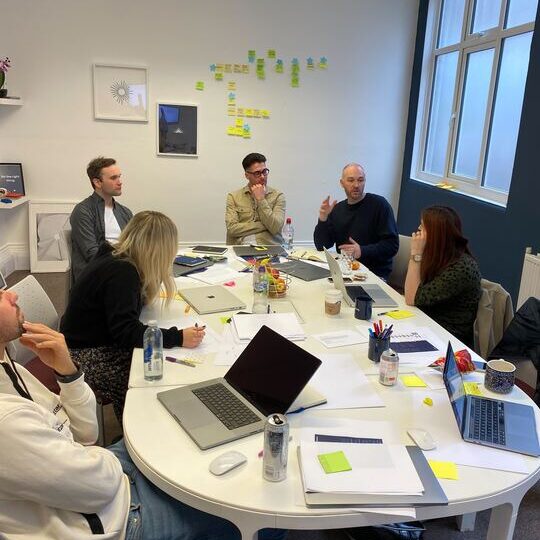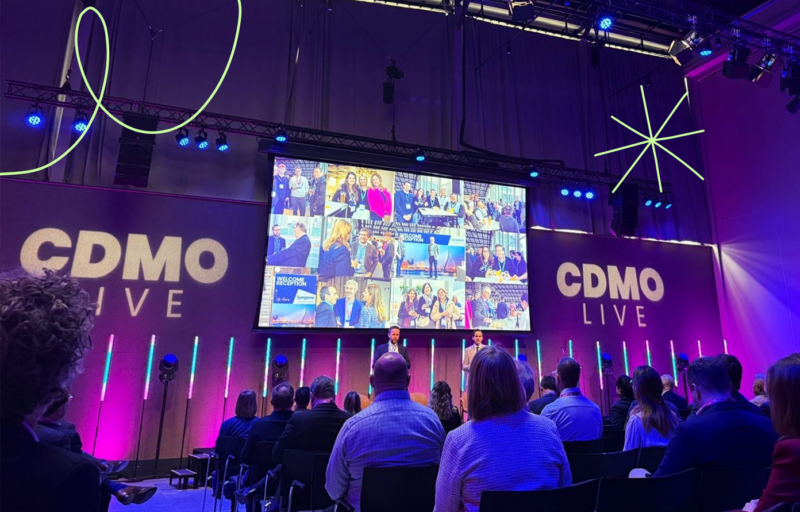blog:
Top 5 life science marketing trends

The key life science marketing trends our team believes will shape the future of the industry.
1. Video
Video continues to grow in importance and our team doesn’t see the trend slowing down this year; quite the opposite, video marketing looks set to rise, particularly short-form vertical video. Alongside mainstream video content, animation is also becoming increasingly important for our clients. Using video for websites and social media content works really well in capturing the attention of your audience in a very noisy and highly competitive space, while creative use of video in resources such as video brochures can help you shine at events. However you use it, video content is a versatile and highly valuable tool for any life science marketeer.
2. Podcasts
We predict an increase in the use of podcasts. We’ve traditionally seen the consumer space use podcasts much more than the outsourcing space, but that looks set to change as companies start to recognise it as a highly credible way to implement content marketing, establish thought leadership, profile the leaders in their organisations and demonstrate their core capabilities.
Having said that, companies will need to think about why they’re doing a podcast, alongside the time investment and resources needed to manage it. We know from the experience of creating, producing and promoting our own podcast, Molecule to Market, that having a clear purpose is key, both to maximising the impact of your podcast and to ensuring that the resources you are pouring into it are not wasted.
3. Data-driven marketing
Our team is interested to see how marketers in our sector can leverage digital marketing and data-driven metrics. Digital marketing and data usage developed rapidly over the past two years because of COVID; teams who had previously invested budget in event attendance suddenly found that they had money to put into different activities. Thus, data collection, data insight and digital marketing received more focus in many organisations. While we will always see the value of returning to physical events, we believe that event attendance should be strategic and that the continued push for improved data and analytics to support lead generation should not fall by the wayside going into 2022.
4. Personal privacy
Focussing specifically on digital, our experts have witnessed personal privacy becoming a hugely important topic. Not only are ordinary people much more aware of any underhand activity since the release of GDPR, but cookie policies are also now mandatory in our industry for websites. This impacts the way that people can be tracked through analytics and the way that we should approach tracking from a reputational perspective. We use tools like Google Consent Mode to balance these two aspects: we are able to gain insight while respecting people’s choice by using tags alongside their consent status. As Google moves away from using cookies altogether, it is becoming increasingly important to find new ways of finding and using data to target people without invading their personal privacy. Using tools like Consent Mode enables the measurement of conversions and analytic insights while being GDPR compliant when using services like Google Analytics, Google Tag Manager (GTM) and Google Ads.
5. Differentiated branding
Whilst people continue to do a lot of work, socialising and other activities online, and with in-person events returning, our team believe that company branding is going to need to become more differentiated than ever to cut through the noise and appeal to audiences that are growing weary of online advertising. We predict that brands will become bolder and brighter in the pharma space, whether that’s through the use of colour or other tactics that they deploy. It will be exciting to see brands differentiate themselves in new and innovative ways. Our team is particularly interested to see how companies approach event branding to standout online and in-person.
Branding projects typically see companies develop a new visual identity, or refresh and update their existing logo, tone of voice and messaging. Using typography, imagery and colours, expert artworkers are able to articulate company capabilities with clarity and consistency to help businesses stand out in a crowded marketplace. Often brand development follows M&A activity, a change in specialism or a focus on new regions/markets.
As we look ahead, these five life science marketing trends underscore the industry’s dynamic evolution. From embracing the power of video and podcasts to leveraging data-driven insights and respecting personal privacy, success will hinge on adaptability and innovation. Companies that prioritize these trends, along with developing a differentiated brand identity, will be well-positioned to thrive in the increasingly competitive life science marketplace.
Remember, the key is to remain agile and customer-centric. Stay informed about the latest technologies and marketing strategies, and always put your audience at the heart of your efforts. By doing so, you’ll ensure your life science marketing stays relevant, engaging, and effective in the years to come.
Whether you’re looking for a commercial partner or curious about our business, this could be the start of a beautiful relationship.
Let’s formulate something remarkable, together.
Related news, insight and opinion




